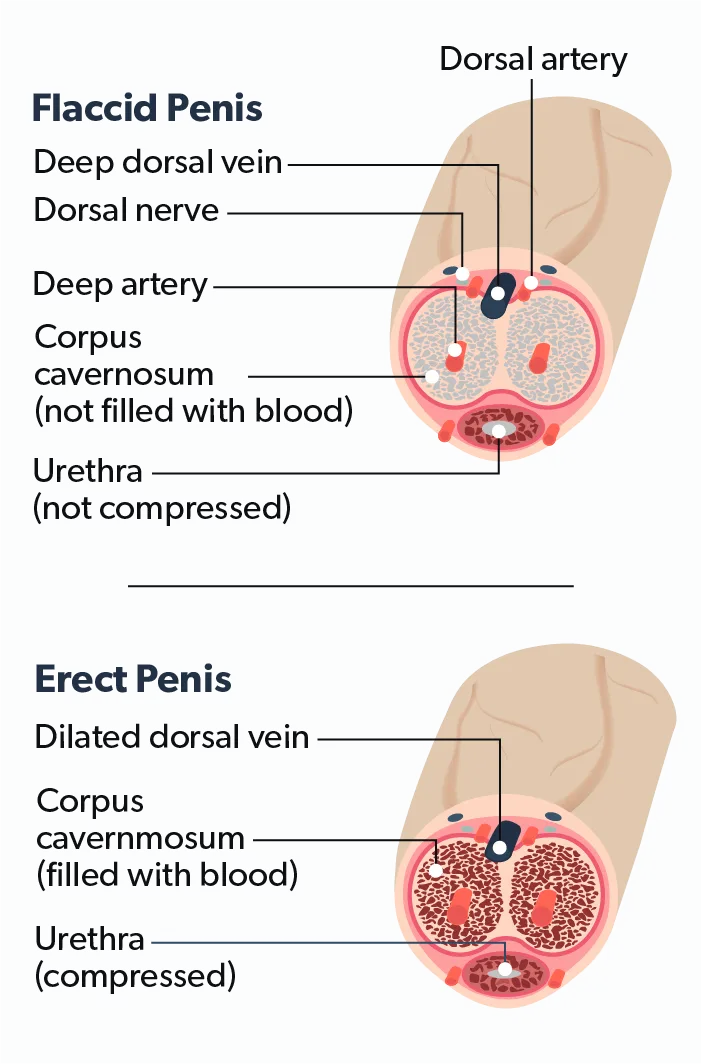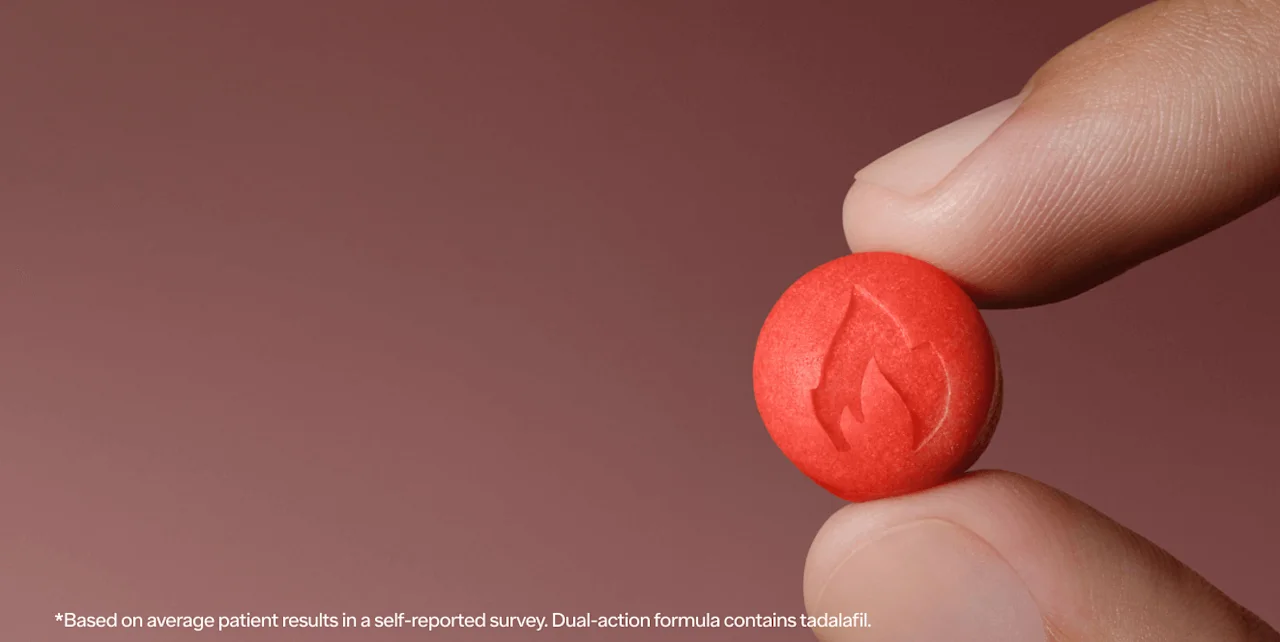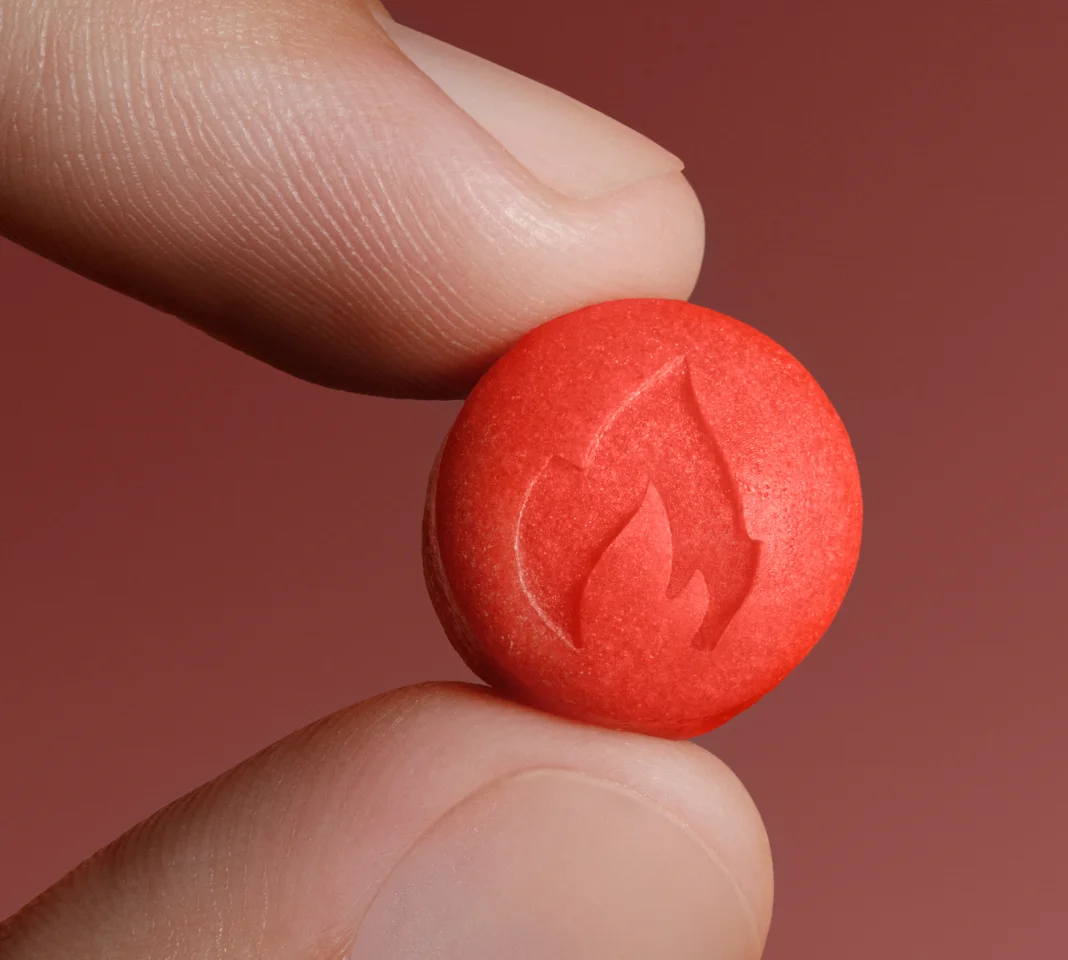Here's what we'll cover
Here's what we'll cover
Here's what we'll cover
Impotence is when a man can’t get an erection or keep an erection long enough for satisfying sexual intercourse. Impotence is more commonly known as erectile dysfunction (ED). While this can occasionally happen to all men, if erection difficulties interfere with your sex life, you may have ED (the term impotence isn’t used that much anymore).
ED affects over 30 million men in the United States. While your risk of ED increases with age, this isn’t just a condition of older men. Roughly 1 in 4 men newly diagnosed with ED are younger than age 40 (AUA, 2018; Capogrosso, 2013).
What is impotence?
During sexual arousal, a complex interaction between several different body systems—like blood vessels, muscles, and hormones—occurs.
First, smooth muscles surrounding small blood vessels in the penis relax, allowing blood to flow in. Blood fills what’s called the corpus cavernosa (spongy tissues in the penis), which trap blood and cause an erection.
This process involves a compound called nitric oxide, which is released by tissues and blood vessels. After orgasm and ejaculation, blood drains from the penis, and the erection comes down (Sullivan, 1999).

ED is when this doesn’t happen as it should. Many things can cause ED, including medication, stress, anxiety, or poor lifestyle habits. It’s important to see a doctor if you’re experiencing ED, as it can be a warning sign of another medical issue like high blood pressure, diabetes, or heart disease. Men with ED also have a higher risk of suffering a heart attack or stroke (AUA, 2018).
Signs and symptoms of ED
Occasional difficulties with getting an erection are not unusual for most men. However, if it’s happening regularly or interfering with your sex life, then you should discuss it with your healthcare provider. Common symptoms of ED include (NIH, 2017):
Difficulty getting an erection at any time
Getting an erection sometimes, but not every time you want to have sex
An inability to maintain an erection long enough to have satisfying sex
Your psychological state is also closely linked to ED. Some men aren’t as interested in sex because of their ED. Others find depression, anxiety, and relationship stressors both contribute to and stem from ED.
Risk factors and causes of ED
Age is one of the most well-known risk factors for ED. While the chances of developing ED go up as men age (especially 50 and older), aging does not lead to ED, and it can occur at any time. Here are some of the other factors that can increase your risk of developing ED (NIH, 2017; Kouidrat, 2017):
Health conditions that can cause ED
Diabetes: Men with diabetes are more than three times as likely to have ED and develop it 10–15 years earlier than men without diabetes.
Low testosterone levels
High blood pressure (hypertension)
Atherosclerosis (hardening of arteries due to cholesterol plaques)
Heart disease
Chronic kidney disease
Multiple sclerosis (MS)
Peyronie’s disease (scar tissue in the penis)
History of surgery
Injury to the penis, spinal cord, prostate, bladder, or pelvis
Medications that can cause ED
Blood pressure-lowering medications (like beta blockers and diuretics)
Antiandrogens (used for prostate cancer therapy)
Antidepressants (including selective serotonin reuptake inhibitors)
Prescription sedatives (medicines that help you calm down or sleep better)
Drugs that treat acid reflux or stomach ulcers
Psychological factors
General anxiety or anxiety about sexual performance
Depression
Guilt or stress about sexual performance
Self-esteem issues
Life stressors
Lifestyle factors
Poor diet
Smoking
Alcohol overuse or abuse
Illegal drug use
Being overweight or obese
Lack of physical activity
Treatment for ED
If you think you may have ED, talk to a healthcare provider. Treatments for ED may start with lifestyle changes to improve heart and blood vessel health. Some things you can do on your own that may help include eating a healthier diet, exercising more, losing weight, smoking cessation, and getting mental health treatment.
Treating ED directly usually involves medication, natural remedies, or a combination of different options.
Medications for ED
The most commonly used treatment for ED is a class of drugs known as PDE5 inhibitors. These are the only pills approved by the FDA for ED treatment and include:
Sildenafil (brand name Viagra)
Vardenafil (brand name Levitra)
Tadalafil (brand name Cialis)
Avanafil (brand name Stendra)
PDE5 inhibitors work by improving blood flow to the penis, allowing for a more robust erection. These medications are taken an hour or two before sex and require sexual arousal to work. According to the American Urology Academy, 7 out of 10 men will have better erections after using PDE5 inhibitors. You should not take PDE5 inhibitors if you’re taking medications called nitrates (typically used to help treat heart conditions).
Other medications you may be recommended are testosterone therapy (if you have low testosterone levels) and drugs like alprostadil, which is injected directly into the penis.
Natural remedies
Natural remedies, while popular, are not all supported by clinical data. That’s why it’s essential to do your homework and talk to a healthcare provider before starting any supplements for ED.
Some herbal supplements, like ginseng, show promising results in improving erections, but results are preliminary and more research is needed. Also, not getting enough folate or vitamin D may contribute to ED, but the data on this is limited (Farag, 2016; Yang, 2014).
ED devices and procedures
For some men, penis pumps may be beneficial. Lastly, surgical procedures are an option with a bendable or inflatable implant that’s placed in the penis. A penile implant allows men to have more control over their erections. Most men (and their partners) are satisfied with the results (AUA, 2018).
Can impotence or ED be cured?
ED is treatable, but don’t go looking for a quick cure. It’s important to remember that ED can be a sign of an underlying medical condition, so talk to a healthcare provider about any symptoms you’re experiencing.
The good news is there are several effective treatment options for ED available, and a doctor can help you choose which one is right for you. Be wary of herbal supplements, and make sure to research the active ingredients if you’re uncertain. Lastly, if you have a partner, talk to them about your issues so they can help and support you.
DISCLAIMER
If you have any medical questions or concerns, please talk to your healthcare provider. The articles on Health Guide are underpinned by peer-reviewed research and information drawn from medical societies and governmental agencies. However, they are not a substitute for professional medical advice, diagnosis, or treatment.
Viagra Important Safety Information: Read more about serious warnings and safety info.
Cialis Important Safety Information: Read more about serious warnings and safety info.
American Urology Association (AUA). (2018). Erectile Dysfunction (ED): Symptoms, Diagnosis & Treatment. Retrieved from https://www.urologyhealth.org/urology-a-z/e/erectile-dysfunction-(ed)
Borrelli, F., Colalto, C., Delfino, D., Iriti, M., & Izzo, A. (2018). Herbal Dietary Supplements for Erectile Dysfunction: A Systematic Review and Meta-Analysis. Drugs , 78 (6), 643-673. doi:10.1007/s40265-018-0897-3. Retrieved from https://pubmed.ncbi.nlm.nih.gov/29633089/
Capogrosso, P., Colicchia, M., Ventimiglia, E., Castagna, G., Clementi, M., & Suardi, N. et al. (2013). One Patient Out of Four with Newly Diagnosed Erectile Dysfunction Is a Young Man—Worrisome Picture from the Everyday Clinical Practice. The Journal Of Sexual Medicine , 10 (7), 1833-1841. doi:10.1111/jsm.12179. Retrieved from https://pubmed.ncbi.nlm.nih.gov/23651423/
Farag, Y., Guallar, E., Zhao, D., Kalyani, R., Blaha, M., & Feldman, D., et al. (2016). Vitamin D deficiency is independently associated with greater prevalence of erectile dysfunction: The National Health and Nutrition Examination Survey (NHANES) 2001–2004. Atherosclerosis , 252, 61-67. doi:10.1016/j.atherosclerosis.2016.07.921. Retrieved from https://www.ncbi.nlm.nih.gov/pmc/articles/PMC5035618/
Huang, S., & Lie, J. (2013). Phosphodiesterase-5 (PDE5) Inhibitors In the Management of Erectile Dysfunction. Pharmacy And Therapeutics , 38 (7), 407, 414-41. Retrieved from https://www.ncbi.nlm.nih.gov/pmc/articles/PMC3776492/
Kessler, A., Sollie, S., Challacombe, B., Briggs, K., & Hemelrijck, M. V. (2019). The global prevalence of erectile dysfunction: a review. BJU International , 124 (4), 587–599. doi:10.1111/bju.14813. Retrieved from https://pubmed.ncbi.nlm.nih.gov/31267639/
Kouidrat, Y., Pizzol, D., Cosco, T., Thompson, T., Carnaghi, M., & Bertoldo, A., et al. (2017). High prevalence of erectile dysfunction in diabetes: a systematic review and meta-analysis of 145 studies. Diabetic Medicine , 34 (9), 1185-1192. doi:10.1111/dme.13403. Retrieved from https://pubmed.ncbi.nlm.nih.gov/28722225/
National Institute of Diabetes and Digestive and Kidney Diseases (NIDDK). (2017). Symptoms & Causes of Erectile Dysfunction . Retrieved June 2, 2020 from https://www.niddk.nih.gov/health-information/urologic-diseases/erectile-dysfunction/symptoms-causes
Sullivan, M., Thompson, C., Dashwood, M., Khan, M., Jeremy, J., Morgan, R., & Mikhailidis, D. (1999). Nitric oxide and penile erection: Is erectile dysfunction another manifestation of vascular disease? Cardiovascular Research , 43 (3), 658-665. doi:10.1016/s0008-6363(99)00135-2. Retrieved from https://academic.oup.com/cardiovascres/article/43/3/658/321047
Yang, J., Yan, W., Yu, N., Yin, T., & Zou, Y. (2014). A new potential risk factor in patients with erectile dysfunction and premature ejaculation: folate deficiency. Asian Journal Of Andrology , 16 (6), 902. doi:10.4103/1008-682x.135981. Retrieved from https://pubmed.ncbi.nlm.nih.gov/25080932/













